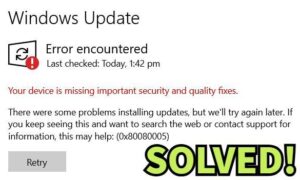For many users, proxy IP is an essential tool in daily work, especially the crawler users, is inseparable from proxy IP.
These users in the process of daily use, it is inevitable to encounter a variety of problems, this time often let people at a loss.
Today we will talk about some common mistakes when using proxy IP “401”, and explain the solution, so that in normal use can be directly solved, do not have to find a solution to the trouble.
First, what causes the “401” error code to occur when using the HTTP proxy (http node proxy)
An HTTP agent returns a 401 Unauthorized error code, indicating that the proxy server requires a client to provide authentication credentials to check whether the client has permission to access requested resources. This usually happens when:
- The proxy server requires authentication: The proxy server requires the client to provide credentials such as a user name and password in order to access the requested resource. This is usually to protect the proxy server from unauthorized access.
- The client does not provide authentication credentials: The client does not provide the necessary authentication credentials, or the credentials are invalid or expired.
- Authentication credentials error: The authentication credentials provided by the client are incorrect or do not match the credentials recorded by the proxy server.
To solve this problem, you need to provide valid authentication credentials (http proxy port)
Specifically, you can try the following methods:
Error code 401 indicates unauthorized access, which may be caused by incorrect or non-provided authentication credentials. When using HTTP proxies, you can take the following steps to resolve error 401:
- Check proxy credentials: You may need to provide authentication credentials on the proxy server. Make sure you provide the correct username and password. If you are not sure if your credentials are correct, contact your proxy server administrator.
- Check proxy Settings: Check that the proxy Settings you are using are correct. Make sure the address and port of the proxy server are correct, and that your HTTP client is configured correctly to use the proxy server.
- Check the access rights of the target server: If you are trying to access protected resources, you may need to provide authentication credentials for the target server. Please check that you have the correct credentials and that you have provided them correctly to the target server.
- Check the proxy server log: Check the proxy server log for more details about the 401 error. The proxy server administrator can view the proxy server log file for details and error messages about the request.
If none of the above fixes error 401, you can try using another proxy server or contact the proxy server administrator for more help.
How to fix this completely? (http socks5 proxy)
- Look for errors in the URL
Make sure you use the correct URL. Sometimes a 401 error occurs if the URL is entered incorrectly. Another possibility is that the link you use to access the relevant page points to the wrong URL. For example, it might be out of date or cause the page to no longer exist (and no redirects).
- Clear the browser cache
One of the common causes of 401 errors is outdated or incorrect cached data or cookies. So if you don’t notice anything wrong with the page URL, the next step is to clear your browser’s cache.
- Refresh your DNS
If the first two solutions don’t work. Another way you can try to fix the 401 error is to refresh your domain name server (DNS).



































